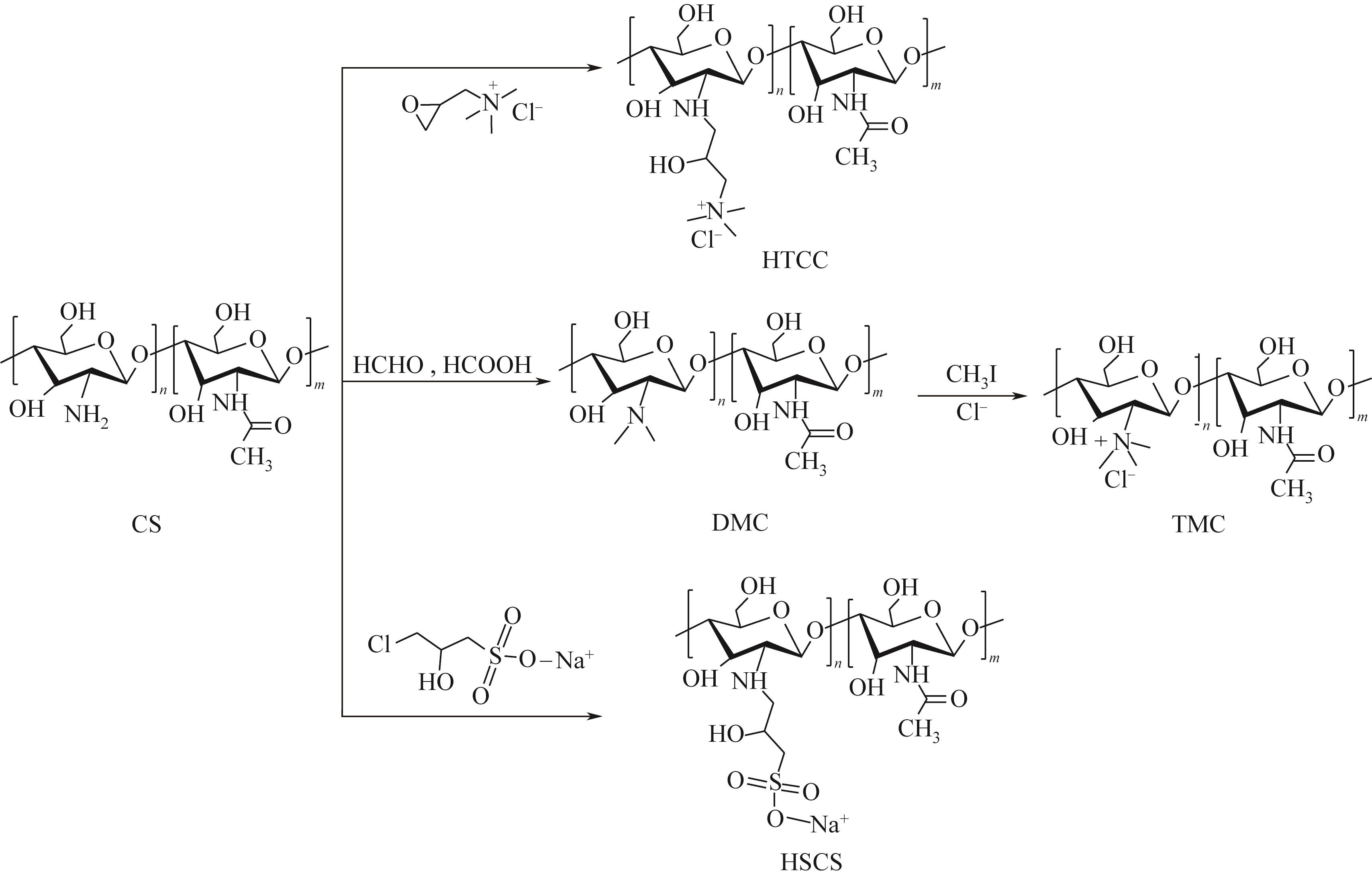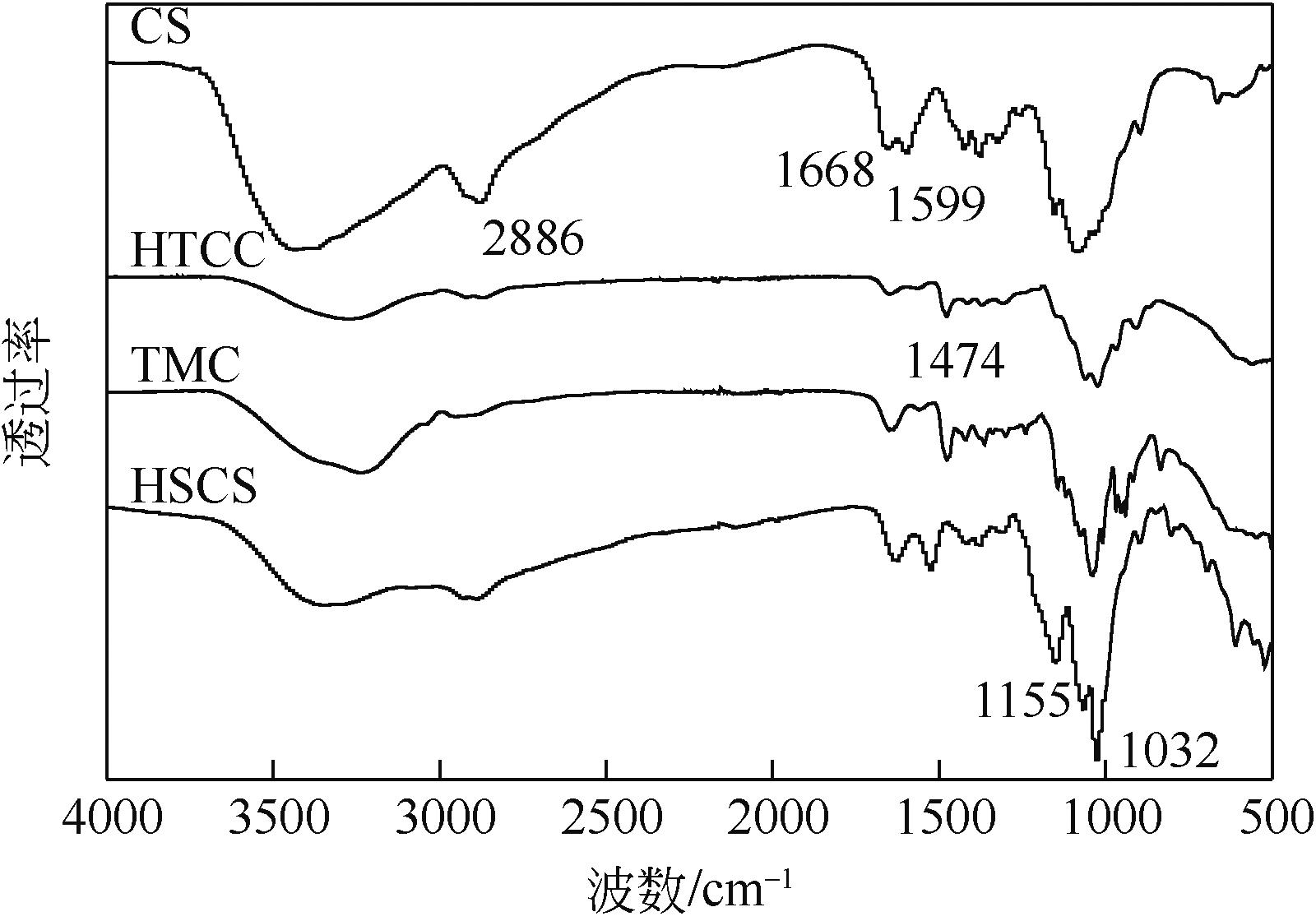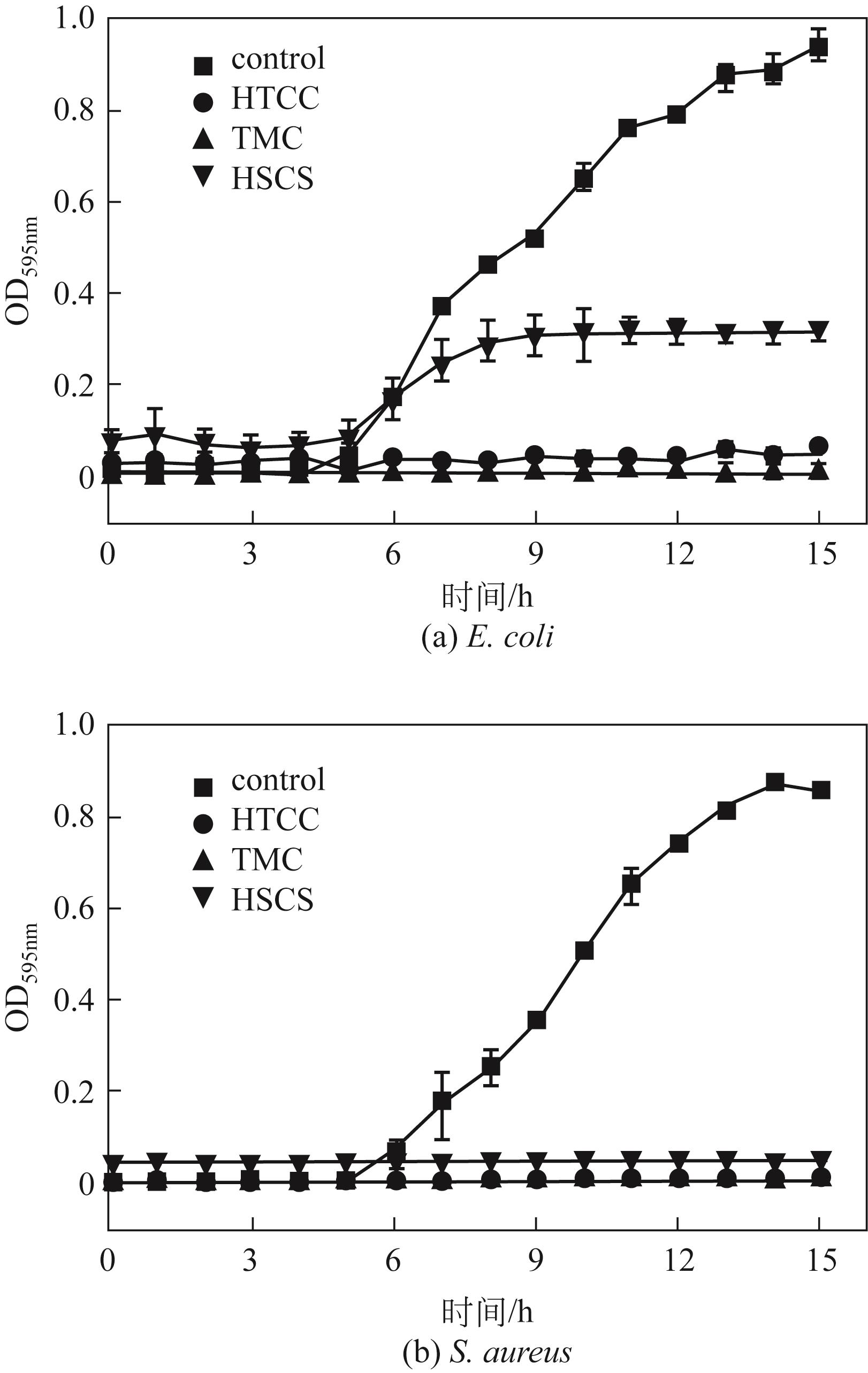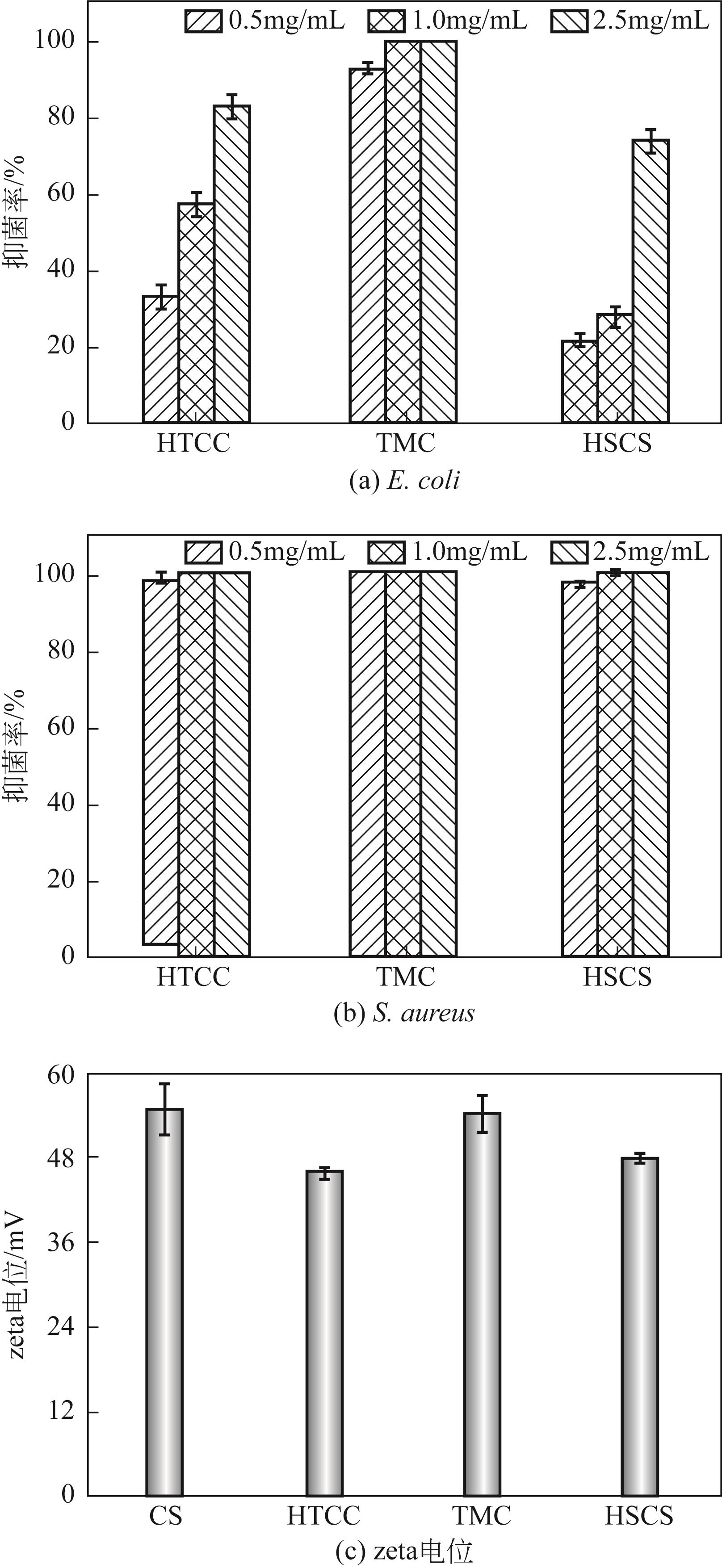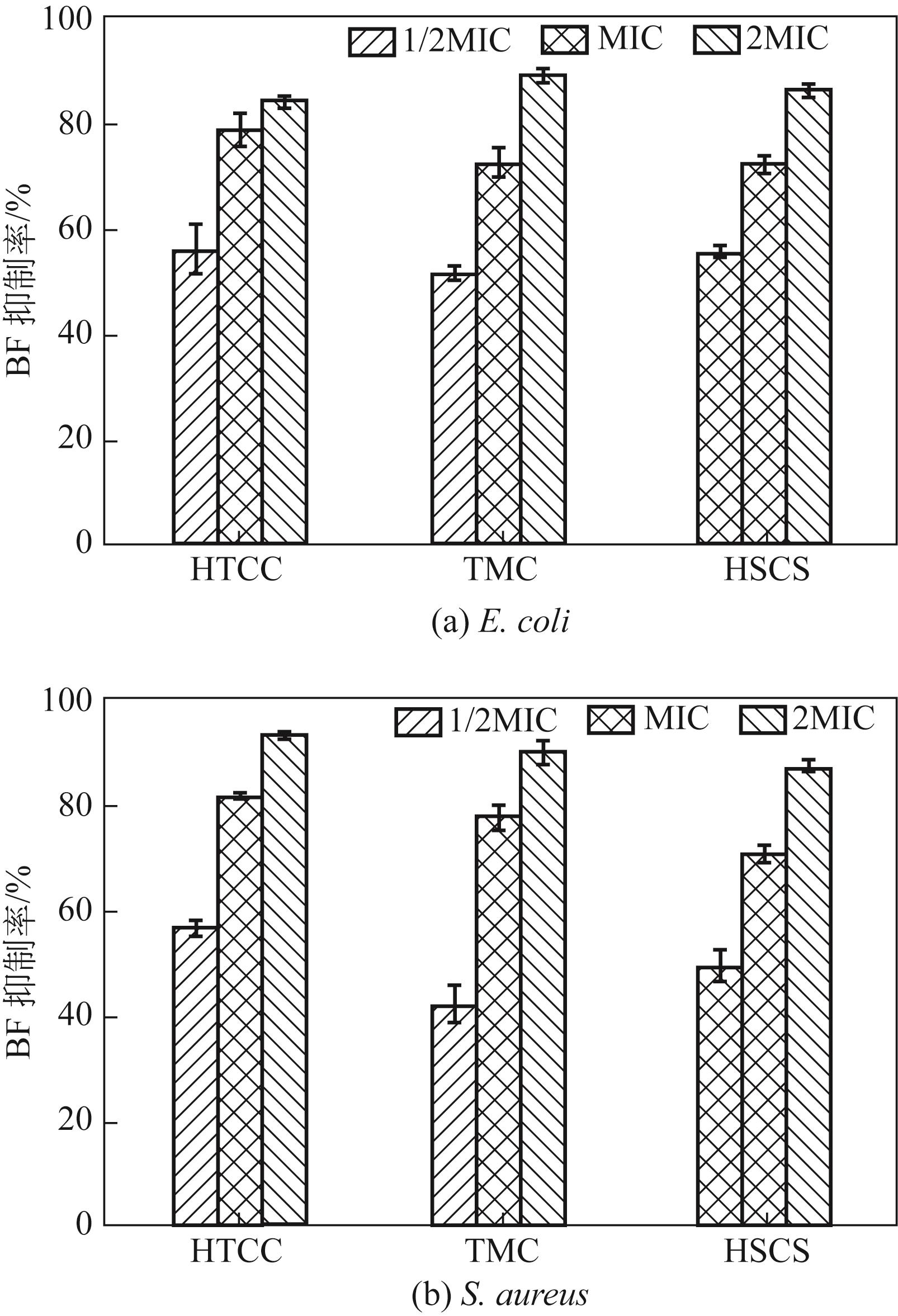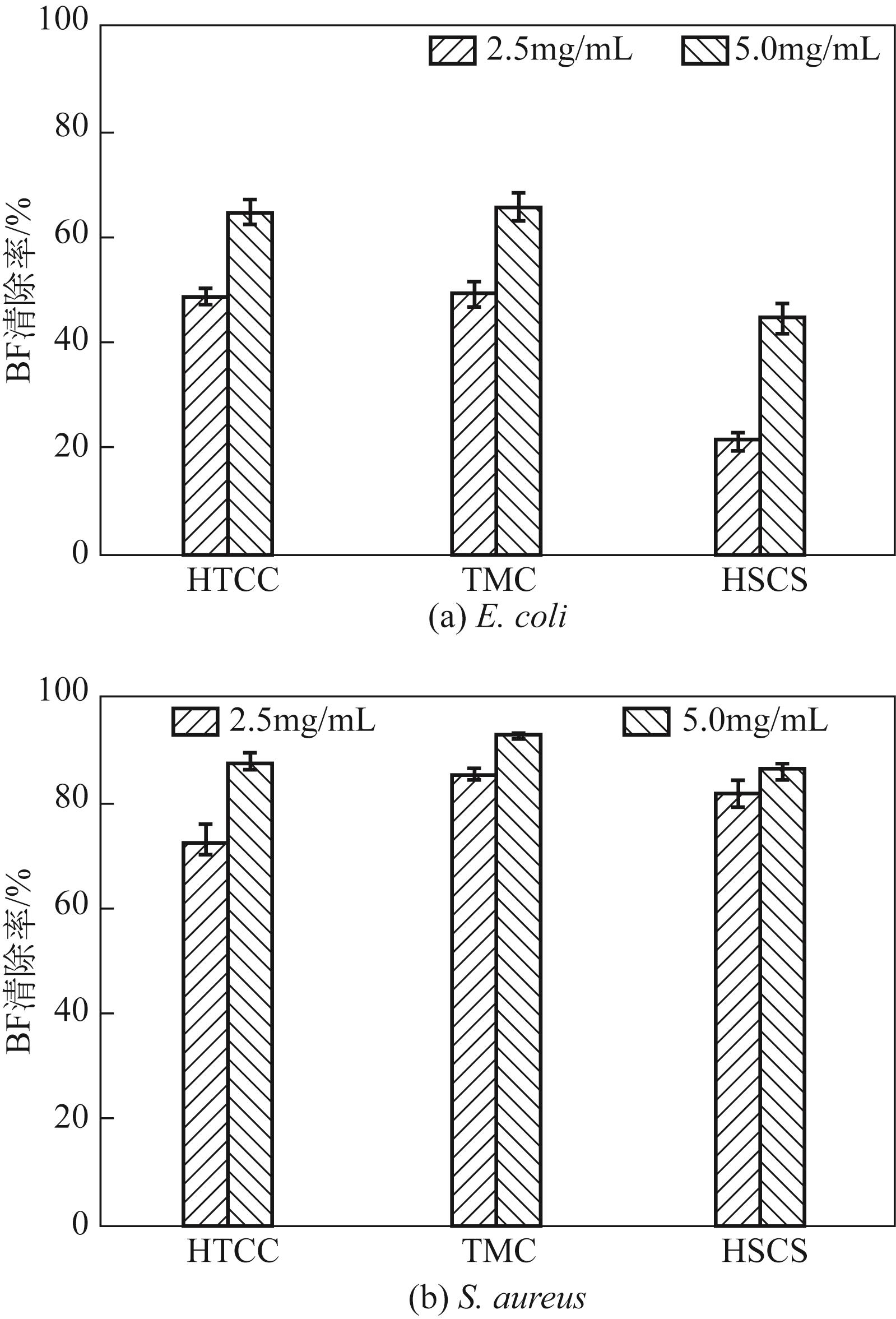| 1 |
KARTHIK C S, CHETHANA M H, MANUKUMAR H M, et al. Synthesis and characterization of chitosan silver nanoparticle decorated with benzodioxane coupled piperazine as an effective anti-biofilm agent against MRSA: A validation of molecular docking and dynamics[J]. International Journal of Biological Macromolecules, 2021, 181: 540-551.
|
| 2 |
CHEAH Wai Yan, SHOW Pau Loke, Son NG I, et al. Antibacterial activity of quaternized chitosan modified nanofiber membrane[J]. International Journal of Biological Macromolecules, 2019, 126: 569-577.
|
| 3 |
SILVA Leandro Prezotto DA, DE BRITTO Douglas, SELEGHIM Mirna Helena Regali, et al. In vitro activity of water-soluble quaternary chitosan chloride salt against E.coli [J]. World Journal of Microbiology and Biotechnology, 2010, 26(11): 2089-2092.
|
| 4 |
耿晓东, 杨荣华, 周雁, 等. N,N,N-三甲基壳聚糖的制备、表征及其抑菌性能研究[J]. 中国食品学报, 2013, 13(5): 117-123.
|
|
GENG Xiaodong, YANG Ronghua, ZHOU Yan, et al. Synthesis, characteristic and antibacterial activity of N,N,N-trimethyl chitosan[J]. Journal of Chinese Institute of Food Science and Technology, 2013, 13(5): 117-123.
|
| 5 |
车秋凌, 辛梅华, 李明春, 等. O-一氯均三嗪-N,N,N-三甲基壳聚糖的合成及其在羊毛织物抗菌中的应用[J]. 化工进展, 2018, 37(3): 1098-1104.
|
|
CHE Qiuling, XIN Meihua, LI Mingchun, et al. Synthesis and application of O-monochlotriazinyl-N,N,N-trimethyl chitosan for antibacterial wool fabric[J]. Chemical Industry and Engineering Progress, 2018, 37(3): 1098-1104.
|
| 6 |
SAHARIAH Priyanka, CIBOR Dorota, Dorota ZIELIŃSKA, et al. The effect of molecular weight on the antibacterial activity of N,N,N-trimethyl chitosan(TMC)[J]. International Journal of Molecular Sciences, 2019, 20(7): E1743.
|
| 7 |
李然, 林世源, 陈卉. N,N,N-三甲基壳聚糖在口服给药中的应用进展[J]. 中南药学, 2020, 18(6): 1038-1041.
|
|
LI Ran, LIN Shiyuan, CHEN Hui. Research progress in the oral administration of N,N,N-trimethyl chitosan[J]. Central South Pharmacy, 2020, 18(6): 1038-1041.
|
| 8 |
WANG Shaohung, CHEN Chengcheung, LEE Chihhua, et al. Fungicidal and anti-biofilm activities of trimethylchitosan-stabilized silver nanoparticles against Candida species in zebrafish embryos[J]. International Journal of Biological Macromolecules, 2020, 143: 724-731.
|
| 9 |
LUO Jiwen, WANG Xiaoying, XIA Bin, et al. Preparation and characterization of quaternized chitosan under microwave irradiation[J]. Journal of Macromolecular Science, Part A, 2010, 47(9): 952-956.
|
| 10 |
LI Sidong, LI Puwang, YANG Ziming, et al. Synthesis and characterization of chitosan quaternary ammonium salt and its application as drug carrier for ribavirin[J]. Drug Delivery, 2014, 21(7): 548-552.
|
| 11 |
WU Jhengyu, WANG Chiyun, CHEN Kueihsiang, et al. Electrospinning of quaternized chitosan-poly(vinyl alcohol) composite nanofiber membrane: processing optimization and antibacterial efficacy[J]. Membranes, 2022, 12(3): 332.
|
| 12 |
TIAN Meng, CAI Shu, LING Lei, et al. Superhydrophilic hydroxyapatite/hydroxypropyltrimethyl ammonium chloride chitosan composite coating for enhancing the antibacterial and corrosion resistance of magnesium alloy[J]. Progress in Organic Coatings, 2022, 165: 106745.
|
| 13 |
XU Tao, XIN Meihua, LI Mingchun, et al. Synthesis, characterization, and antibacterial activity of N,O-quaternary ammonium chitosan[J]. Carbohydrate Research, 2011, 346(15): 2445-2450.
|
| 14 |
刘玉红. 磺化壳聚糖对细菌及其生物被膜抑制作用的研究[D]. 杭州: 浙江工商大学, 2019.
|
|
LIU Yuhong. The inhibiting effects of sulfonated chitosan on bacteria and its biofilm[D]. Hangzhou: Zhejiang Gongshang University, 2019.
|
| 15 |
LIU Yuhong, JIANG Yu, ZHU Junli, et al. Inhibition of bacterial adhesion and biofilm formation of sulfonated chitosan against Pseudomonas aeruginosa [J]. Carbohydrate Polymers, 2019, 206: 412-419.
|
| 16 |
YANG Yue, XING Ronge, LIU Song, et al. Hydroxypropyltrimethyl ammonium chloride chitosan activates RAW 264.7 macrophages through the MAPK and JAK-STAT signaling pathways[J]. Carbohydrate Polymers, 2019, 205: 401-409.
|
| 17 |
王军. 磺化壳聚糖减水剂的制备和性能研究[J]. 新型建筑材料, 2021, 48(7): 136-140.
|
|
WANG Jun. Preparation and properties of sulfonated chitosan superplasticizer[J]. New Building Materials, 2021, 48(7): 136-140.
|
| 18 |
DOS SANTOS Z M, CARONI A L P F, PEREIRA M R, et al. Determination of deacetylation degree of chitosan: A comparison between conductometric titration and CHN elemental analysis[J]. Carbohydrate Research, 2009, 344(18): 2591-2595.
|
| 19 |
ZHENG Liang, LI Jing, YU Manman, et al. Molecular sizes and antibacterial performance relationships of flexible ionic liquid derivatives[J]. Journal of the American Chemical Society, 2020, 142(47): 20257-20269.
|
| 20 |
顾春涛, 王雅莹, 朱军莉, 等. 顺反式肉桂醛对肉源隆德假单胞菌生物被膜和致腐性的抑制作用[J]. 微生物学报, 2020, 60(1): 26-35.
|
|
GU Chuntao, WANG Yaying, ZHU Junli, et al. Inhibitory activity of trans-cinnamaldehyde and cinnamaldehyde on biofilm formation and spoilage of Pseudomonas lundensis [J]. Acta Microbiologica Sinica, 2020, 60(1): 26-35.
|
| 21 |
李芬, 范玉堂, 王丽娟, 等. 牛乳源大肠杆菌生物被膜形成及抗生素的作用[J]. 西北农业学报, 2020, 29(7): 983-989.
|
|
LI Fen, FAN Yutang, WANG Lijuan, et al. Biofilm formation and antibiotics resistance of Escherichia coli isolated from milk[J]. Acta Agriculturae Boreali-occidentalis Sinica, 2020, 29(7): 983-989.
|
| 22 |
吴兴杰, 马列, 高长有. 磺化壳聚糖的制备及其对生长因子活性的保护作用[J]. 高分子学报, 2012(4): 418-426.
|
|
WU Xingjie, MA Lie, GAO Changyou. Reparation of sulfonated chitosan and its ability to protect bFGF activites[J]. Acta Polymerica Sinica, 2012 (4): 418-426.
|
| 23 |
Thev POL, CHONKAEW Wunpen, HOCHAROEN Lalintip, et al. Amphiphilic chitosan bearing double palmitoyl chains and quaternary ammonium moieties as a nanocarrier for plasmid DNA[J]. ACS Omega, 2022, 7(12): 10056-10068.
|
| 24 |
VERHEUL Rolf J, AMIDI Maryam, DER WAL Steffen VAN, et al. Synthesis, characterization and in vitro biological properties of O-methyl free N,N,N-trimethylated chitosan[J]. Biomaterials, 2008, 29(27): 3642-3649.
|
| 25 |
YIN Qiang, LI Yan, YIN Qinjian, et al. Synthesis and rheological behavior of a novel N-sulfonate ampholyte chitosan[J]. Journal of Applied Polymer Science, 2009, 113(5): 3382-3387.
|
| 26 |
HUANG Jianying, JIANG Hengjun, QIU Miao, et al. Antibacterial activity evaluation of quaternary chitin against Escherichia coli and Staphylococcus aureus [J]. International Journal of Biological Macromolecules, 2013, 52: 85-91.
|
| 27 |
SUN Zhimin, SHI Changgu, WANG Xiangyang, et al. Synthesis, characterization, and antimicrobial activities of sulfonated chitosan[J]. Carbohydrate Polymers, 2017, 155: 321-328.
|
| 28 |
ZHOU Z X, WEI D F, GUAN Y, et al. Damage of Escherichia coli membrane by bactericidal agent polyhexamethylene guanidine hydrochloride: Micrographic evidences[J]. Journal of Applied Microbiology, 2010, 108(3): 898-907.
|
| 29 |
SATHIYASEELAN Anbazhagan, SARAVANAKUMAR Kandasamy, MARIADOSS Arokia Vijay Anand, et al. Biocompatible fungal chitosan encapsulated phytogenic silver nanoparticles enhanced antidiabetic, antioxidant and antibacterial activity[J]. International Journal of Biological Macromolecules, 2020, 153: 63-71.
|
| 30 |
BOGINO Pablo, OLIVA María, SORROCHE Fernando G, et al. The role of bacterial biofilms and surface components in plant-bacterial associations[J]. International Journal of Molecular Sciences, 2013, 14(8): 15838-15859.
|
| 31 |
EJAZ Sadaf, IHSAN Ayesha, NOOR Tayyaba, et al. Mannose functionalized chitosan nanosystems for enhanced antimicrobial activity against multidrug resistant pathogens[J]. Polymer Testing, 2020, 91: 106814.
|
| 32 |
YUE Lin, WANG Min, KHAN Imran Mahmood, et al. Preparation, characterization, and antibiofilm activity of cinnamic acid conjugated hydroxypropyl chitosan derivatives[J]. International Journal of Biological Macromolecules, 2021, 189: 657-667.
|
 ), 辛梅华1(
), 辛梅华1( ), 李明春1(
), 李明春1( ), 陈琦1, 毛扬帆2
), 陈琦1, 毛扬帆2
 ), XIN Meihua1(
), XIN Meihua1( ), LI Mingchun1(
), LI Mingchun1( ), CHEN Qi1, MAO Yangfan2
), CHEN Qi1, MAO Yangfan2
